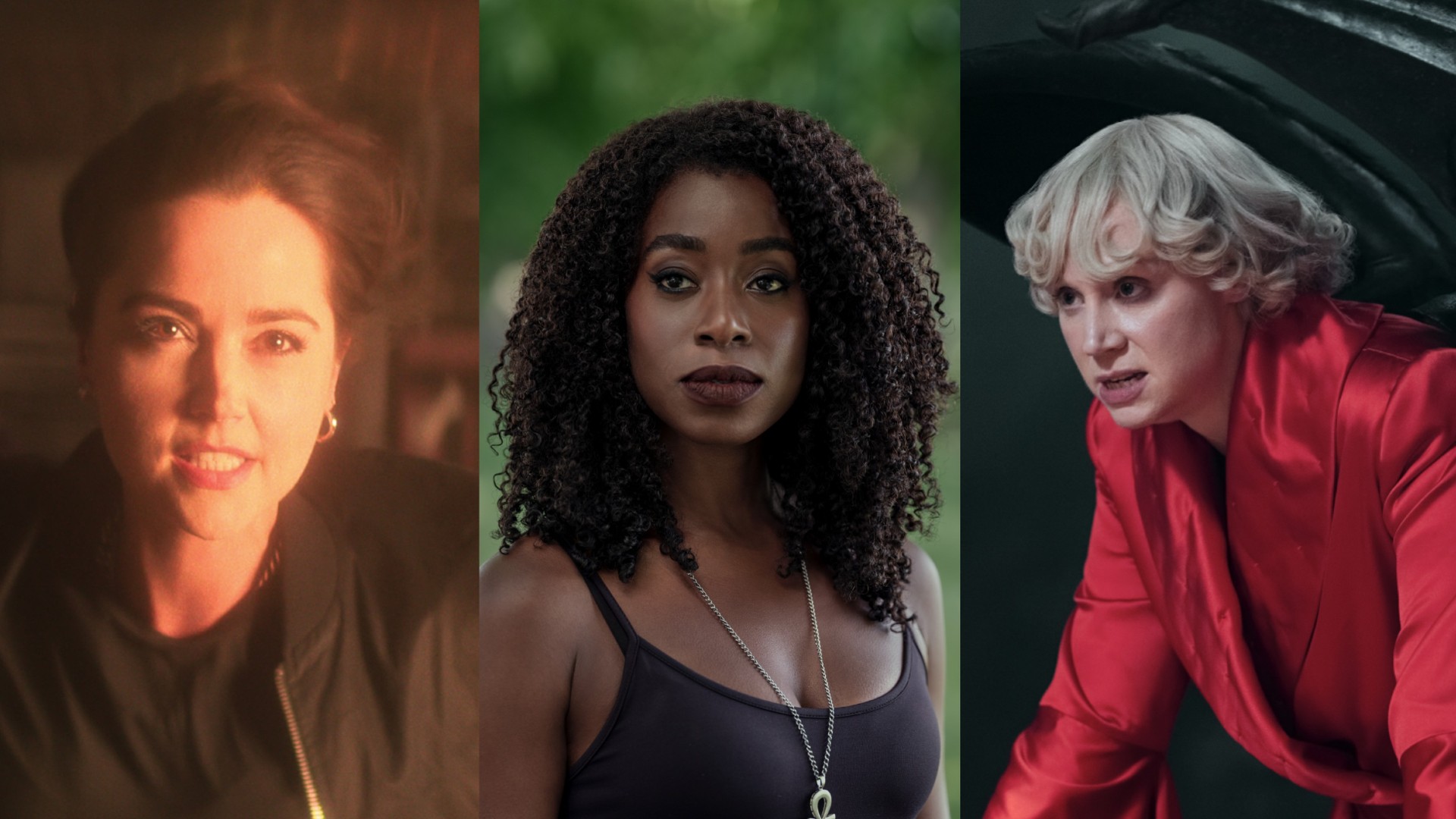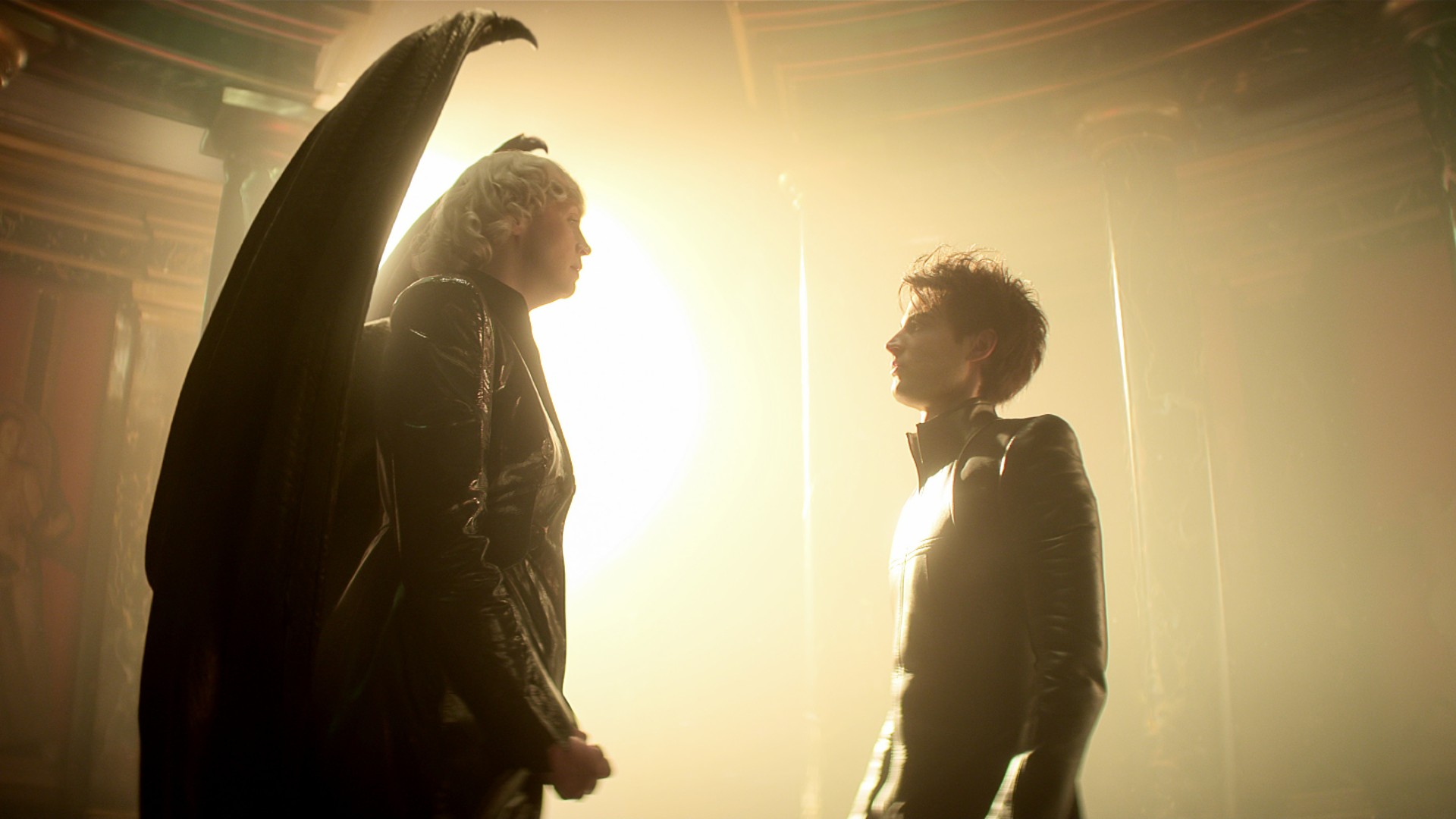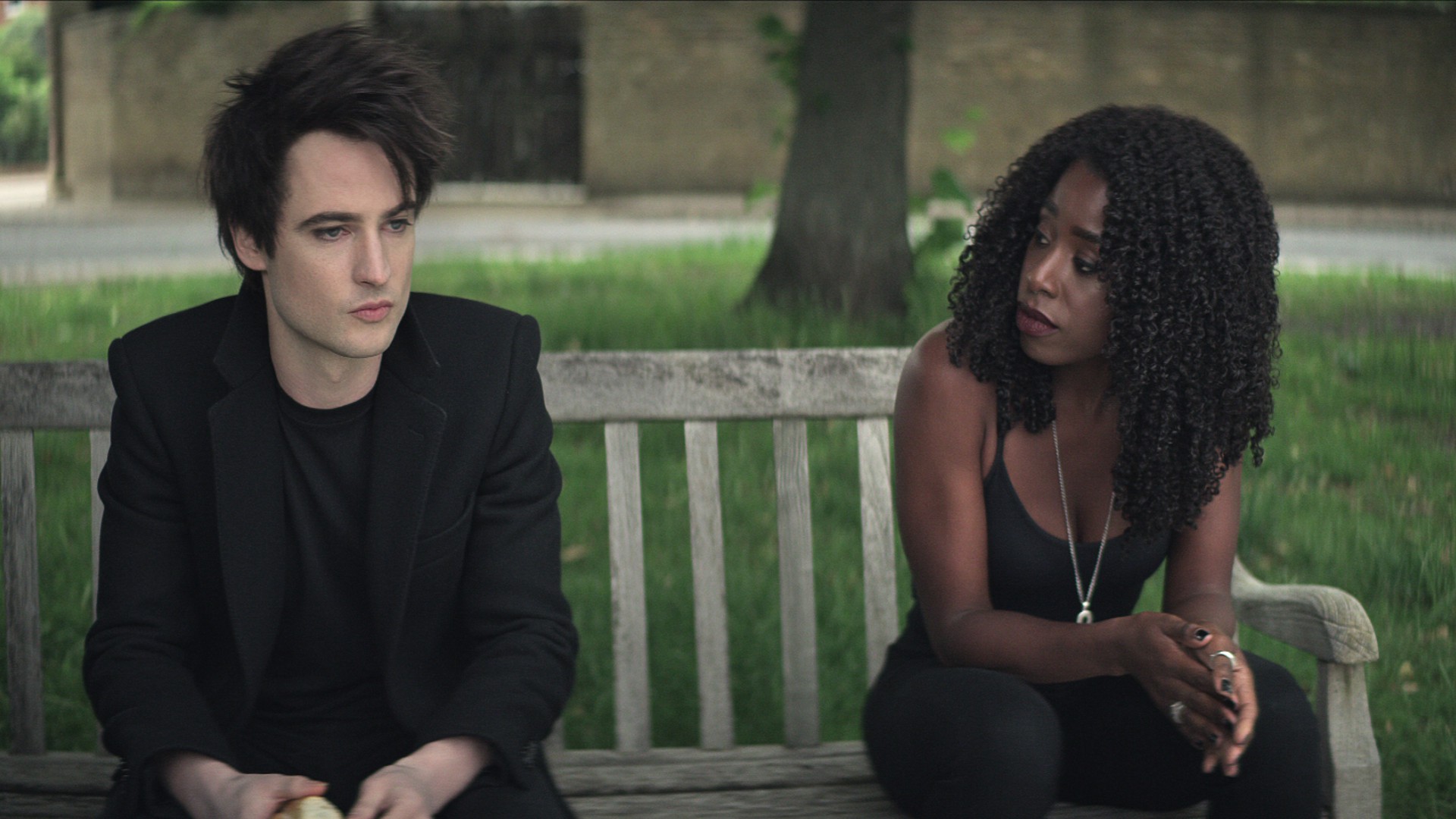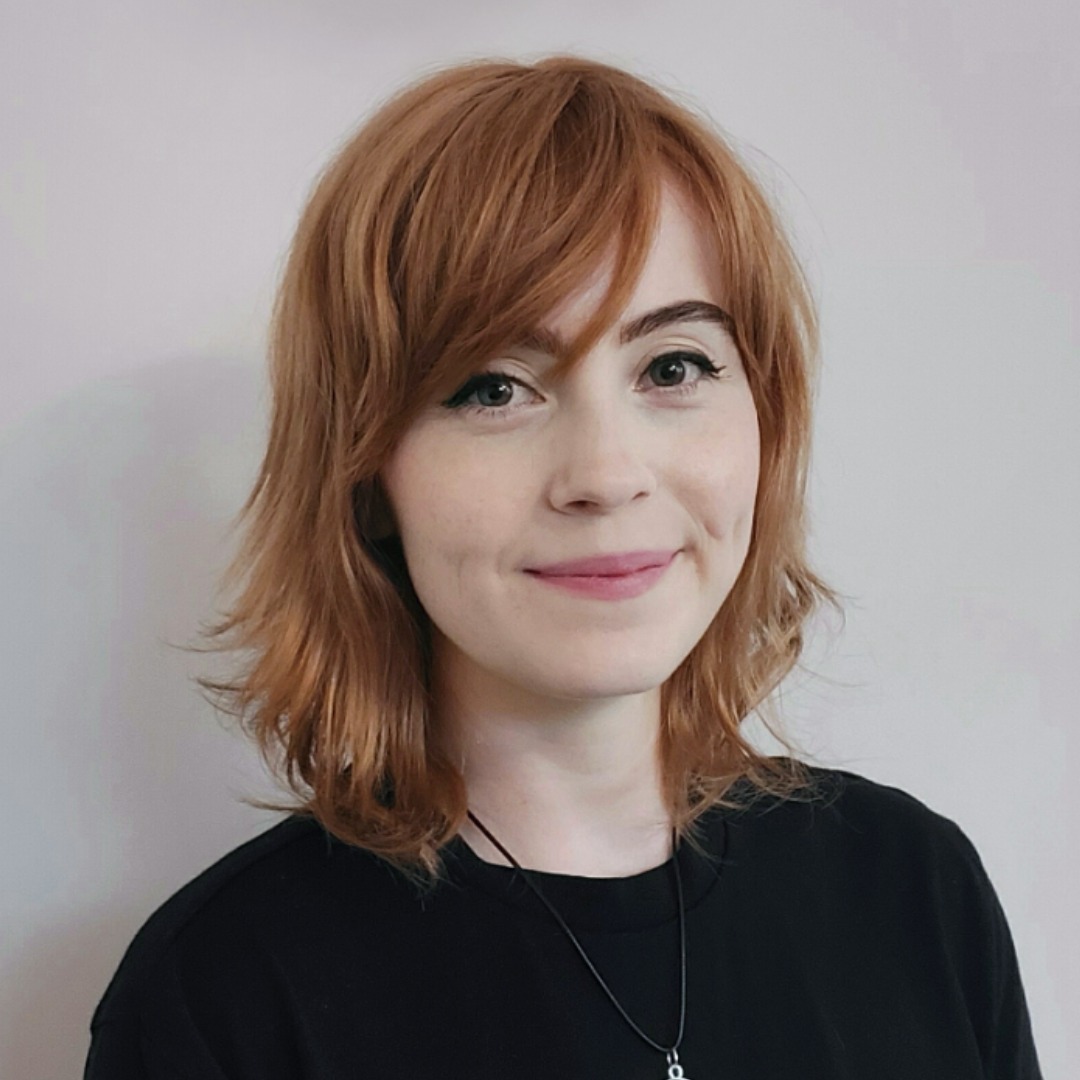
In The Sandman, the titular cosmic being, sometimes known as Morpheus, is forced to cross realms to claim back his dream-weaving tools after escaping a century-long imprisonment by a cruel magic user. His travels see him journey to Hell, modern-day London, and beyond, and in the process, meet a whole host of characters; from Gwendoline Christie's Lucifer to Jenna Coleman's gender-bent take on DC's most iconic exorcist, Johanna Constantine.
Not only that, but he's tasked with rounding up his gone-rogue nightmares – most notably, The Corinthian (Boyd Holbrook), a human-like entity with murderous tendencies – and to restore balance, too, having been unable to monitor people's snoozing for the last 100 years.
Due to the sprawling nature of the Netflix adaptation, which is based on Neil Gaiman’s beloved comic series, several of the actors never met one another until they promoted it at San Diego Comic-Con in July. More recently, three of them – Christie, Coleman, and Kirby Howell-Baptiste, who plays Morpheus’ sister Death – sat down with Total Film to talk about filming their scenes separately from one another, the fantasy's "extraordinary" sets, the challenges of learning Latin while also learning French, and more...
This interview has been edited for clarity and length.

Total Film: All three of you are only in a couple of episodes each; Kirby, you're in one. I was wondering, when you got the scripts, did you just get your scenes? Did you get the whole thing? And have you seen all of the show now, and what was it like watching when you hadn't been privy to a lot of it?
Kirby Howell-Baptiste: When I signed on, I was sent two scripts and that's all I got and all I knew about. Fortunately, I'd previously read The Sandman and the script stayed so close to what was in the comic that I had an idea of what came before me, but I didn't know what all that would look like in this new adaptation. I haven't watched all of it yet, but I've watched six episodes, and it's been so exciting to see everything because I never got to work with... well, anyone really, it was just Tom. It was so fabulous to see the, sort of, short films everyone else had created.
Gwendoline Christie: It's a really extraordinary, almost undefinable series. I received a few scripts. I read the comics, I was very focused on my own part, but I was also really aware that when I went in to shoot, I was just shooting with Tom and a few others. I saw the first four episodes just before going to Comic-Con, then I met the entire cast. It's been such an explosion of energy, of realizing that we're among a really incredible diverse group of people that all have very distinct voices that have, I believe, made something that I think is brilliant.
Bringing all the latest movie news, features, and reviews to your inbox
So, Gwendoline, Lucifer is really serving some looks in this show, but I wanted to talk about the wings in particular. I've heard they were mostly practical?
Christie: Allan said he wanted to change me from a sword to wings. I've never actually had wings, and they felt like they should be an essential part of my life. They were practical. I mean, they were beautifully crafted, because they had a weird realism to them. The membrane of them felt realistic somehow, like how I'd imagine bats' wings must feel. And they definitely contributed to the inner tension that Lucifer has. Everything was pre-made around the wings. My wonderful partner, Giles Deacon, designed my costumes so that was his own challenge, too. I don't think he had so far designed around wings.

In one of your episodes, Jenna, Constantine has a pretty horrible nightmare, and I was just wondering what that was like to film. I'm guessing there were rigs involved because you were flying all about the place?
Jenna Coleman: I felt like Tom Cruise when I only did, like, two little stunts. Those sequences were really, really great. I love that we get to see so many versions of Johanna Constantine as well, you get the '90s grunge, and then we meet her later on, but yeah, those dream sequences? So many wind machines. We were in a nightclub in Clapham in the middle of lockdown. I can't remember which one but it's very famous, but it was so surreal entering into a nightclub at the time when you know the whole world was shut down. I was strung up by wires, hung upside down, dragged along by my foot, face first on floor of the nightclub.
And you had to learn Latin for it, right?
Coleman: I did. I had to learn Latin for this at the same time as learning French for The Serpent, and they are so different in terms of the way you move your mouth. It's basically the entire opposite of what you do for French. So that, in particular, was challenging. I would find myself, when we were doing a lot of voiceover work and me walking around London actually, just repeating and repeating the lines. Performing exorcisms, as I was going about my day.
Baptiste: If someone seemed a little odd on the tube, you'd just recite a paragraph and hope for the best? (laughs)
Coleman: Yeah, yeah, yeah.

Kirby, I love the show's interpretation of Death and I enjoyed that, in a show where quite a lot of people die, Death's episode is one of the most hopeful and lovely. Can you talk about how you approached that character and how you built on what was already in the comics?
Baptiste: I was really fortunate because the character that Neil has created, as longtime fans of the show will know, is so different to any other iteration of Death that we've seen. Typically, it's this Grim Reaper, this dark looming force that takes people against their will. What we have here, and something that I'm really excited about for people who have never read the comics, is that you'll come in one idea of Death and you will leave with another. Ours is a nurturer, this guide, a shaman you'd want to get a beer with and that is the person that pushes you from this life to the next. I was really honored to play that role.
Gwendoline, what was it like filming in Hell? How much of it was actually there? How much was visual effects? And how did it all influence your performance?
Christie: Pretty much all of it was there. They really built that palace. It was up on stilts. It was a huge set, with pits of fire. It had human bodies coming out of the walls. It was an extraordinary thing. We obviously did use many VFX elements, particularly during the challenge – those are always tough, but working with Tom Sturridge was genuinely a delight. It was all about the embrace that we had together as actors, the connection that we had, and the trust that we had in each other.
I think we really loved playing those scenes. So, it was all about listening to Tom and reacting to it. We had a brilliant director, Jamie Childs, who wanted to push things as far as possible. We had different ideas for our performances in terms of the emotionality or how far we wanted to take it, and he was really willing to go there with us. It was a surprising and joyous, collaborative experience... in Hell.
All 10 episodes of The Sandman are available to stream now. If dark fantasy isn't your bag, and you're overwhelmed by the amount of content on the platform, then check out our guide to the best Netflix shows for some viewing inspiration.
I am an Entertainment Writer here at GamesRadar+, covering all things TV and film across our Total Film and SFX sections. Elsewhere, my words have been published by the likes of Digital Spy, SciFiNow, PinkNews, FANDOM, Radio Times, and Total Film magazine.



